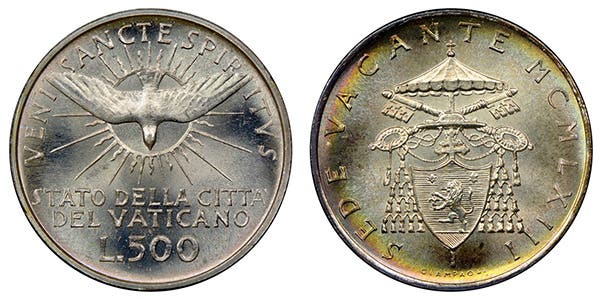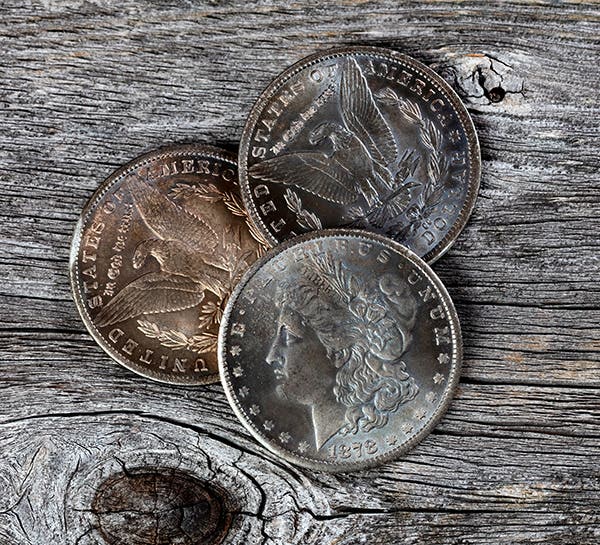Bargains, Sleepers in Indian Head $5s
In the recent past, the price of gold has jumped up, then settled a bit. This time, the jump went up over the $2,000 per ounce mark for a few…
In the recent past, the price of gold has jumped up, then settled a bit. This time, the jump went up over the $2,000 per ounce mark for a few days, and the settling seems to be to some zone between $1,850 and $1,900 per ounce. This mirrors the behavior of gold at different times in the past few decades, with the only real difference being that the spike is to a higher number than ever before. And of course, when gold makes a spectacular move, collectors and non-collectors alike take notice. That means that this would appear to be the absolute worst time to look at classic United States gold and seek out bargains. But let’s swim against the tide a bit, as it were, and examine one series of United States gold in some detail. Let’s go deep, and take more than just a peek at the Indian Head $5 half eagles, designed by Mr. Bela Lyon Pratt.
This series of half eagles doesn’t get as much play as some of the others, perhaps because of the belief that the entire set is tough to assemble. We’ll admit that there are a couple of key dates within the span of time from 1908 to 1916, then the last hurrah of 1929, that will always be costly. The quintet of the 1908-D and S, the 1909-O, the 1911-D and the 1915-S all have small enough mintages that they will be tough to land in any condition. Plus, the 1929 is always extremely expensive. We’ll steer clear of these.
There are four Indian Head $5 gold pieces from which we’ll probably learn more. The 1909-D saw over 3.4 million minted, making it by far the most common in the entire series. Right now one of these will run about $700 in a low mint state grade. That may seem like a hefty expense, but we should keep in mind that there is 0.24187 ounces of precious metal in each coin, which means the metal alone is worth $447 when gold trades at $1,850 per ounce. All things considered, this is not all that expensive when we consider that these are United States gold pieces with more than a century of history to them.
Along with the 1909-D, the 1911-S will always be considered common, since its mintage was a tad over 1.4 million pieces. These two are the only dates and mintmarks that rise into seven figures, but the 1911 and the 1913 both get pretty close, with each having more than 900,000 to their tally. Each sports a similar price tag in grades such as AU-58, or MS-60 and even MS-62. It is noteworthy that the 1911-S jumps in price at a lower grade than all the others, right at about AU-55 to AU-58. Despite it being a common piece among these half eagles, it seems that collectively we collectors still are willing to pay some premium for that mintmark from the City by the Bay.
Knowing the general price for a common date and mintmark Indian Head $5 gold piece, perhaps the obvious next step is to see if there are any on the list that have a significantly lower mintage, but a cost that’s still the same as, or close to, these most common dates. When we do this, we’ll find the following: the 1908-D, the 1910-D and the 1914-D, all staring back at us. The Mile High City was founded in 1858, and believe it or not, a mint was authorized for it as early as 1862. Since that was a tough year for Americans to do much of anything except fight with and kill one another, the mint didn’t get built for quite a while and only managed to unveil its first coins in 1906. The 1908-D Indian Head $5 gold pieces only saw a production of 148,000 pieces. We just mentioned that the 1909-D is the most common piece in the entire series; but by 1910, the “D” marked coins had again dropped to a low number, 193,600. We’ve mentioned the 1911-D as low enough to be a key date. There were no Denver $5 gold pieces for the next two years, then 247,000 of them in 1914. All told, we might appropriate a line from Dickens and claim that when it comes to Indian Head $5 gold pieces, of Denver’s output, we can say it was “the best of times, it was the worst of times.” From these “worst of times” though comes some extremely good news for us bargain hunters today. In the MS-60 grade, the three low mintage pieces – the 1908-D, as well as the 1910-D and the 1914-D – all cost just about the same as the most common dates in the entire series. This is worth letting sink in for a moment or two. We have here three gold pieces that are among the least common in this series, all of which cost no more than the most common dates, and in a Mint State grade, no less. These aren’t just bargains; these are true sleepers.
There are a few other dates within this series that are lean in terms of their mintages. But every time one of them has an “S” mintmark, it tends to cost more. As mentioned, we do seem to have some kind of long-term love affair with classic U.S. coins minted on the West Coast.
The idea of looking for bargains among gold right now may seem counterintuitive to our common sense. But we have just seen that the Indian Head $5 half eagles are not super expensive, despite the recent jump in the price of gold on world markets. We have also seen that there are a few sleepers nestled snugly into this series. That latter bit of info is music to the ears of any bargain collector.








